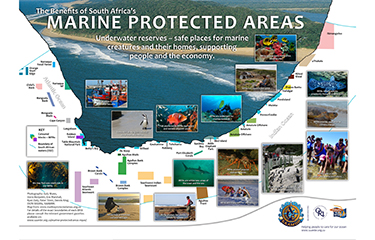A new report has found that countries in the Western Indian Ocean (WIO) region have identified and set aside 143 marine and coastal locations as protected areas in an effort to build climate-resilient fishery systems and boost fish stocks.
The protected areas cover 553,163 square kilometers, or nearly 7 percent of the total exclusive economic zone within the WIO region. Of that total, 63 percent of the area encapsulated by protected zones have been created since 2015, a new publication by the U.N. Environment Program (UNEP) - Nairobi Convention and the Western Indian Ocean Marine Science Association, “The Marine Protected Areas Outlook.”
The Nairobi Convention is a partnership between governments, civil society, and the private sector with the mission of building a more prosperous WIO region with healthy rivers, coasts, and oceans.
“With only 7 percent of the region’s EEZ under protection, greater momentum and investments will be required by countries to reach the more ambitious target of 30 percent protection by 2030, as proposed under the [U.N.'s] Global Biodiversity Framework,” the report said.
Countries in the WIO region include France, Kenya, Somalia, the Seychelles, Comoros, South Africa, Mozambique, Tanzania, Mauritius, and Madagascar.
The research paper said marine protected areas (MPAs) act as buffers against overexploitation of fish stocks and protection of jobs in the fisheries sector. Notable recent initiatives to entrench the MPAs concept in the region include a decision by South Africa to declare 20 new protected areas, and the Seychelles' announcement it reached 30 percent of its coastal areas under protection in 2019.
Comoros has developed MPA-specific legislation, while other countries in the WIO are considering new protections for 50,000 square kilometers of ocean, according to the report.
The Africa Biodiversity Collaborative Group (ABCG) has warned the WIO region is under pressure from “increased fish harvesting rates, inequitable and poorly governed trading relations with external and global markets, and ever-greater pressures from competing uses.”
ABCG has characterized WIO management measures to maintain fish stock and environments as “often weak, and undermin[ing] the ability to construct climate-resilient fisheries systems.”
Furthermore, the group said WIO’s “market chains for many species are not well-characterized and trade policy and the costs of adapting to climate change have not been evaluated.”
“Better integration of small-scale fisheries into development processes, climate change adaptation investments, fisheries and coastal governance and knowledge-systems can all help to improve the living and working conditions of fishers and reduce their vulnerability to economic hardship,” ABCG said.
Photo courtesy of the South African Association for Marine Biological Research







